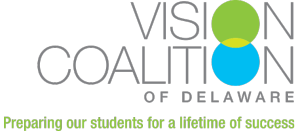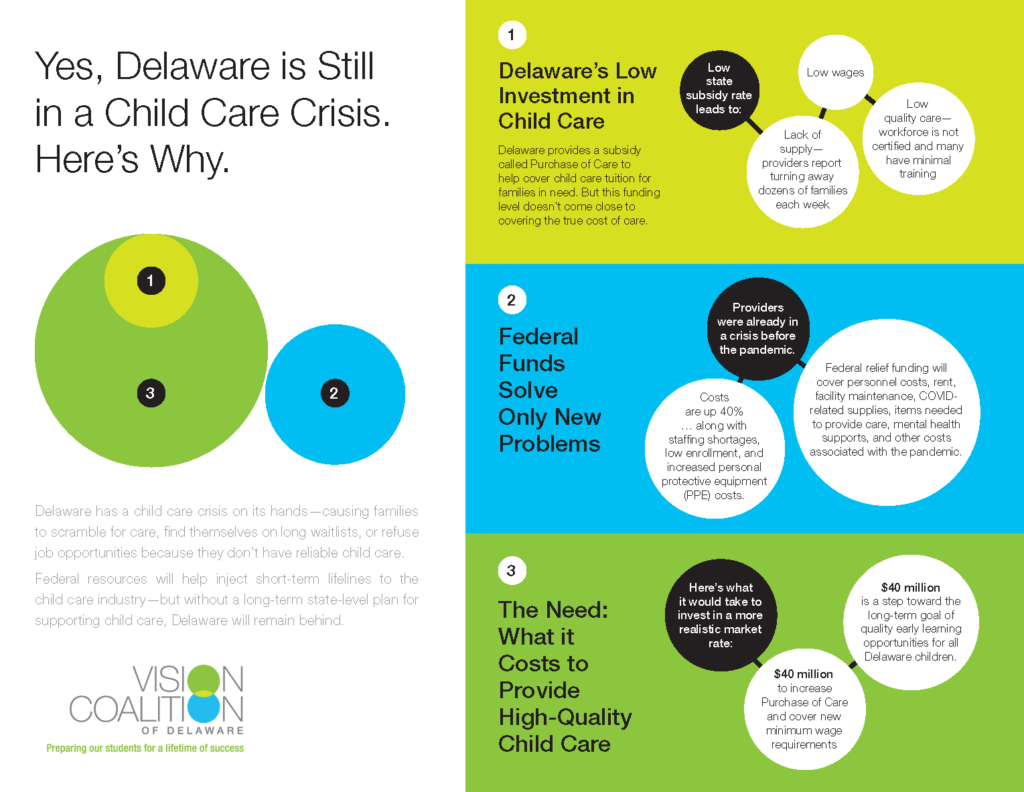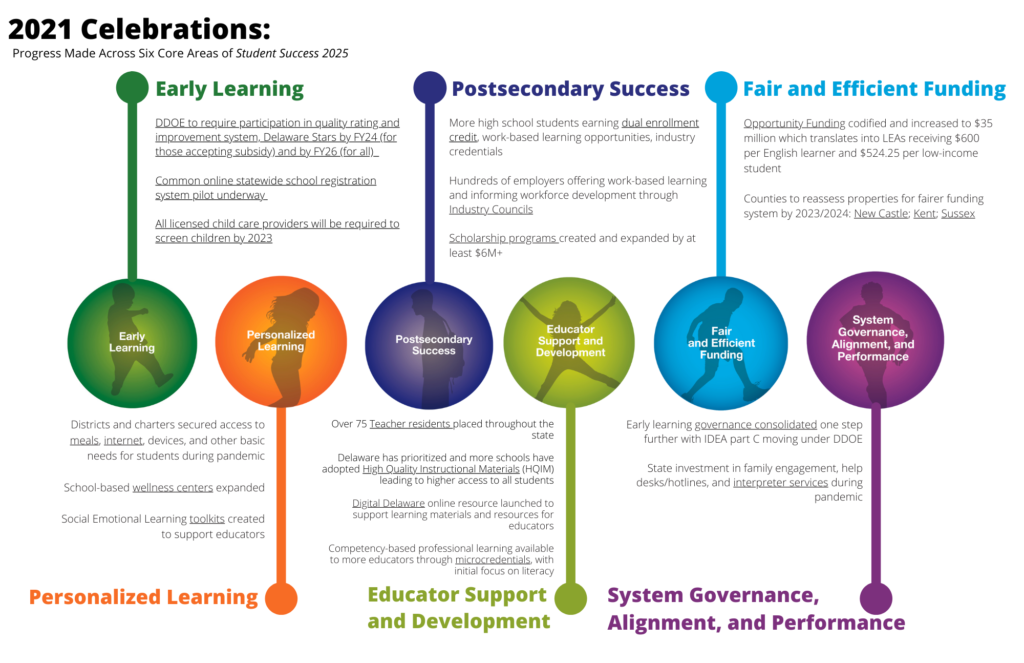
As the Vision Coalition and other partners look the end of 2021, we’re excited by the progress we’ve seen in Delaware over the last, challenging school year. At the same time, large federal infusions will begin to shift our educational landscape. Below, is a short celebration of Delaware progress on Student Success 2025 and a glimpse of what happens next with federal dollars.
2021 Celebrations: Progress Made Across Six Core Areas in Student Success 2025
Click on the image below to view articles and sources related to the 2021 progress.
Education Leaders Prioritize Learning Loss, Technology, Student Health with American Rescue Plan Funding
The third federal stimulus package stemming from the COVID-19 pandemic, President Joe Biden’s $1.9 trillion American Rescue Plan Act, provides $350 billion for states, local governments, territories and tribal governments, with around $125 billion nationally earmarked for K-12 schools.
Out of the $125 billion for K-12 education, Delaware received approximately $411 million, with most of the money (90 percent) going directly to Local Education Agencies (LEAs), otherwise known as districts and charter schools. The remaining 10 percent was reserved for the Delaware Department of Education (DDOE).
DDOE’s spending plan was submitted in June and recently approved by U.S. Department of Education. Almost all LEA spending plans have been posted on DDOE’s website.
Below are a few common themes that have emerged from LEA plans. Many of these priorities have clear connections to Student Success 2025.
Summary of ARP Spending
Plans focus on assessing students and directing interventions that respond to their social, emotional, and academic needs.
At-home and hybrid learning means LEAs and state leaders need to sort out the hardware, software, connectivity, assistive technology, and adaptive equipment for students, including students from low-income families and children with disabilities.
This includes wrap-around supports, prioritizing social-emotional learning, and the hiring of counselors, psychologists, and mental health professionals.
This includes students from low-income families, children with disabilities, English learners, racial and ethnic minorities, students experiencing homelessness, and foster care youth who may need targeted supports, like wrap-around supports, targeted high-dosage tutoring and summer programming, curriculum for SEL needs, additional paraprofessionals, interpreter and evaluation services, among others.
Additional Funding
Other themes include investments in infrastructure like HVAC units and air quality systems and investments in operations and the continuity of services, including funding current or new staff, substitute needs, transportation needs, and indirect costs.
Federal stimulus dollars are one-time funds and are therefore not sustainable. Many LEAs are looking to use ESSER funds to hire new staff, but many are struggling to find personnel to fill these new roles.
The federal stimulus ESSER fund is just one pot of funding to address student needs, but it is not the only funding LEAs are using. For example, other funding, like Delaware’s Opportunity Funding, help to fund additional resources and supports for English Learners and students from low-income families.
To review the state and LEA plans, visit the dedicated ESSER page of the Delaware Department of Education’s website.
Other Resources

As the Governor develops his FY23 budget, Vision Coalition leaders expressed gratitude for federal investments in child care, and look to build on efforts underway with additional state investments that move Delaware toward our shared vision of high-quality affordable child care for all children.
This infographic (above) and letter (below) summarize what we are hearing not just from the child care industry, but from businesses, families, teachers, and many others. A full list of Vision Coalition 2022 budget and legislative priorities will follow prior to session



